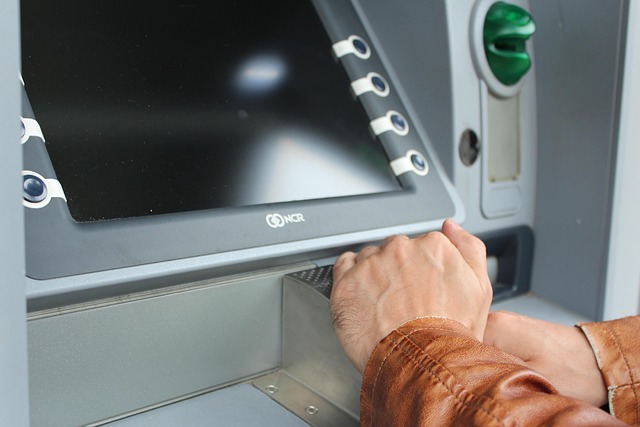
Key Highlights
- Get ready to shell out more for ATM cash withdrawals starting May 1, 2025.
- The Reserve Bank of India (RBI) has given the green light for increased ATM interchange fees.
- This price adjustment will affect customers who go beyond their free transaction limit.
- The revised charges are a result of demands from white-label ATM operators grappling with operational costs.
- This move is likely to impact smaller banks more severely due to their limited ATM network.
Introduction
Get ready, as ATM transactions are soon going to cost more! The Reserve Bank of India (RBI) in New Delhi has shared news about changes in fees for ATM cash withdrawals. Starting May 1, you will have to pay extra, especially if you often use ATMs more than your free transaction limit. The RBI made this choice due to rising operational costs for banks and white-label ATM operators.
Understanding the New ATM Cash Withdrawal Charges
For those who do not know, withdrawing money from ATMs will cost more. This increase is due to the RBI’s choice to raise interchange fees. Interchange fees are the costs one bank pays to another when you use an ATM that is not theirs. Because of this, banks will add some of these extra fees for their customers.
The exact charge you will see may vary based on your bank and account type. So, it is smart to check your bank’s website or reach out to them for specific information.
Overview of Changes Effective May 1
Starting on May 1, 2025, new charges for ATM cash withdrawals will begin. The fee will go up by Rs 2 for financial transactions and Rs 1 for non-financial transactions, like balance inquiries. So, if you withdraw cash, it will cost you Rs 19 per transaction instead of Rs 17.
Remember, these changes only happen when you go over your free transaction limit. This limit is still five transactions at other bank ATMs in city areas and three in areas away from the city. Your daily ATM withdrawal limit will not change and is set by your bank based on the type of account you have.
If you have questions, you can reach out to your bank for details about your daily withdrawal limit. Knowing these changes could help you use ATMs better.
Impact on Bank Customers in India
This change in ATM withdrawal charges will definitely affect bank customers all over India. The people who will feel it the most are those who often use ATMs and go over their free transaction limit. With more people using digital payments now, ATMs are not being used as much. This increase in fees may push more people to try digital payment methods.
Here are some key impacts:
- Higher costs for cash withdrawals for those who use ATMs often.
- Customers might switch to using digital payment methods.
- Banks could lose money from ATM fees if more people choose digital options.
It is still unclear how this change will affect how customers use ATMs and digital payments in the long run.
Comparison of Old vs. New Withdrawal Charges
Let’s quickly go over the differences between the old and new ATM withdrawal charges to make the fee structure clearer. The changes mainly focus on interchange fees.
Before, the interchange fee for financial transactions was Rs 17. Now, it is Rs 19. For non-financial transactions, such as balance inquiries, the fee has gone up from Rs 6 to Rs 7. These new charges show that ATM services are becoming more expensive for banks.
Detailed Breakdown of Increased Fees
To provide more clarity, here’s a breakdown of the old and new ATM withdrawal charges. Remember that these are standard charges, and the actual amounts may vary depending on your bank, account type, and applicable taxes in your region. Always confirm the specific charges with your bank for accurate information.
While the increase might seem minimal at first glance, it can add up over time, especially for those who frequently use ATMs beyond their free transaction limit. For a clearer perspective, let’s look at a table comparing the old and new fees:
| Transaction Type | Old Charges (₹) | New Charges (₹) |
|---|---|---|
| Cash Withdrawal | 17 | 19 |
| Balance Inquiry | 6 | 7 |
Banks Affected by the New Charges
The new charges will affect the banking sector. Some banks will feel the impact more than others. Smaller banks, like regional ones or those with fewer ATMs, are likely to feel this pressure more. They depend more on larger banks’ systems, which means they pay higher interchange fees.
On the other hand, larger banks, such as the State Bank of India and Punjab National Bank, have many ATMs and may face less effect. They might even benefit if customers use their ATMs more to avoid extra charges. In the end, how much any bank is affected will depend on their plan for handling these higher costs.
Reasons Behind the Revision of Withdrawal Charges
The main reason why the RBI decided to allow changes to ATM withdrawal charges is due to the increasing costs that banks and ATM providers face. Keeping the ATM systems running smoothly, including security, updates to technology, and managing cash flow, has become much more expensive.
The earlier fee plan, created in 2021, was not workable for many businesses. This was especially true for white-label ATM operators who provide services in remote and rural areas. By raising these charges, the goal is to cover these higher costs and keep ATM services available for everyone.
Bank’s Perspective on Increased Fees
From a bank’s view, higher ATM fees are necessary to pay for the costs of providing easy banking services. Banks want to give their account holders a set number of free transactions. However, it is important to balance customer convenience and the costs of running the bank.
As it costs more to run ATMs, banks must find ways to handle these expenses. These higher fees will help a little and let banks like the Bank of India keep giving their services smoothly.
How These Changes Benefit the Banking Ecosystem
The new ATM withdrawal charges may feel like a burden for customers at first. However, this change aims to help the banking system in the long run. Higher charges will support the maintenance and availability of ATM services, particularly in less-served areas.
Moreover, this move could encourage more people to use digital payments. This aligns with India’s goal of using less cash. Focusing more on digital transactions can bring more transparency, lower risks, and decreased overall costs in the future.
Strategies to Minimize ATM Withdrawal Charges
The rise in ATM withdrawal charges can be tough, but you can use some simple tips to lessen the effect on your money. A bit of planning and careful spending can really help.
First, check your bank’s rules on free ATM transactions. Most banks allow a certain number of free transactions each month. Make sure to take full advantage of those free transactions. Next, try to take out a larger amount of money less often. This way, you can stay within your free transaction limit and avoid extra fees.
Using Digital Payments to Reduce Physical Withdrawals
With more people using digital payment methods, now is a great time to adopt them. Digital payments are a smart and easy way to handle your money. They can help you depend less on ATMs.
UPI transactions, mobile wallets, and net banking have changed the way we pay. They make payments smooth and safe. These options often have benefits, like cashback offers and rewards. You can also make transactions from anywhere, at any time.
Benefits of Using Bank’s Own ATMs
Using digital payment options can reduce how much you use ATMs. However, when you need cash, it’s smart to use your bank’s ATMs. This can help you avoid extra charges from using ATMs of other banks. Banks often offer a set number of free transactions at their own ATMs, even more than the regular free limit for other ATMs.
By planning when you take out cash and using your bank’s ATMs, you can easily avoid those extra fees. Keep in mind that reducing unnecessary charges is a good way to manage your money well.
Conclusion
In conclusion, starting May 1, the new ATM cash withdrawal charges will change things for bank customers in India. It’s important to understand these changes and how they affect your banking costs. To reduce these extra charges, consider using digital payments or using your bank’s own ATMs. By using these methods, you can make your financial transactions easier and improve your banking experience. Stay updated and take action to make the best of these changes and keep your banking costs in check.
Frequently Asked Questions
What is the new ATM cash withdrawal charge?
Starting May 1, the fee for ATM cash withdrawals will rise to Rs 19 per transaction from Rs 17. This change is permanent, not temporary. You will pay this fee if you go over your free ATM withdrawal limit. Remember, applicable taxes may vary.
Can I avoid paying the new ATM withdrawal charges?
You can skip extra ATM charges by using your bank’s ATMs and keeping within your free transaction limit. Another great way to cut back on ATM withdrawals is by using digital payments.
Are all banks in India applying these new charges?
Yes, the new charges approved by the Reserve Bank of India will be used by all banks in India. This includes the Bank of India, Punjab National Bank, and other financial institutions, as well as smaller banks.
How often can I withdraw without incurring extra charges?
The number of free ATM withdrawals can be different based on the bank and the type of account you have. Usually, you can get five free transactions each month at other bank ATMs. To know your specific free transaction limit, check with your bank.
What alternatives do I have to avoid these fees?
You have different ways to avoid paying ATM fees:
- Use digital payments, like UPI transactions.
- Use the free transactions your bank offers at their ATMs.
- Take out bigger amounts less often to stay within the free limit.







